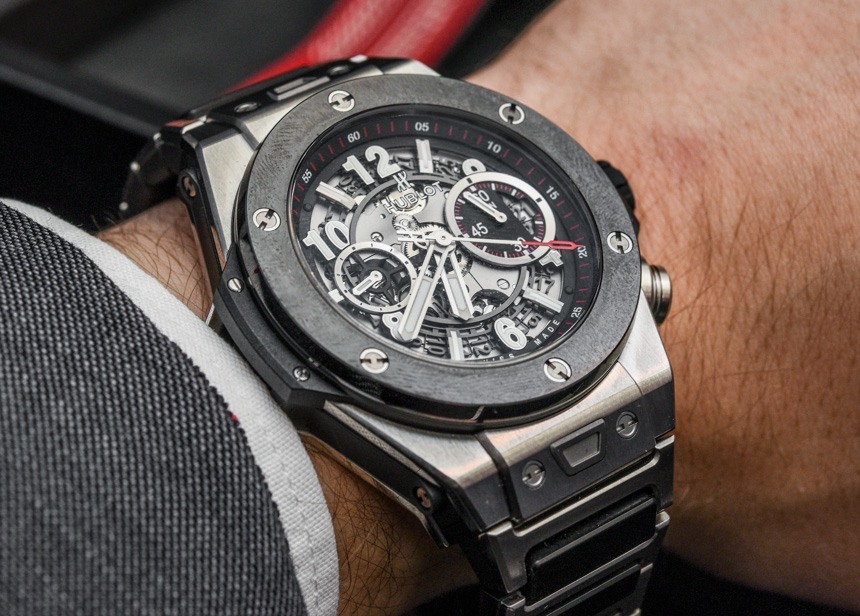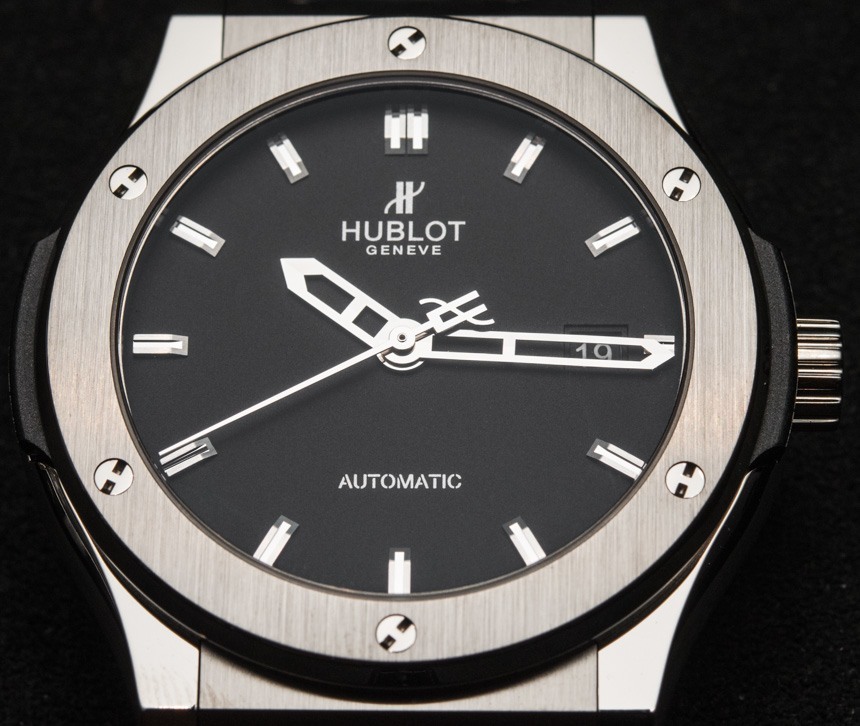
Welcome to the third installment in our Cost of Entry series, where we go hands-on with the most affordable, entry-level watches from leading luxury watch brands to see what you get for your money when “entering a brand.” In our first article, we looked at Rolex and the Oyster Perpetual, followed by the Panerai Luminor PAM000 Base Logo watch. Now it’s time to see what the most affordable Hublot has to offer with the Hublot Classic Fusion Titanium watch.
For a little background about the brand, ever since Jean-Claude Biver (following a series of successes at Omega and Blancpain) took the helm at Hublot in 2004, the brand’s Big Bang watches have been a massive hit. Countless iterations and celebrity fanboys have positioned Hublot among the most popular high-end watch brands out there. The Big Bang is probably what most people think of when they imagine a Hublot watch, but it’s not the only game in town for someone interested in the brand. However, the perception isn’t for undue cause – back in 2005, when the Big Bang as we know it today came out, it did exactly what its name suggests by having a wildly popular release that brought the ailing brand back to life – in a big way. That being said, you can get that Hublot experience without opting for this model, but rather going for the more demure Hublot Classic Fusion Titanium. Offering luxury watch buyers something different and more “contemporary” than a lot of its similarly priced Swiss peers, Hublot has not shown any signs of slowing down; and it’s possible to enjoy the brand for less than you might imagine.
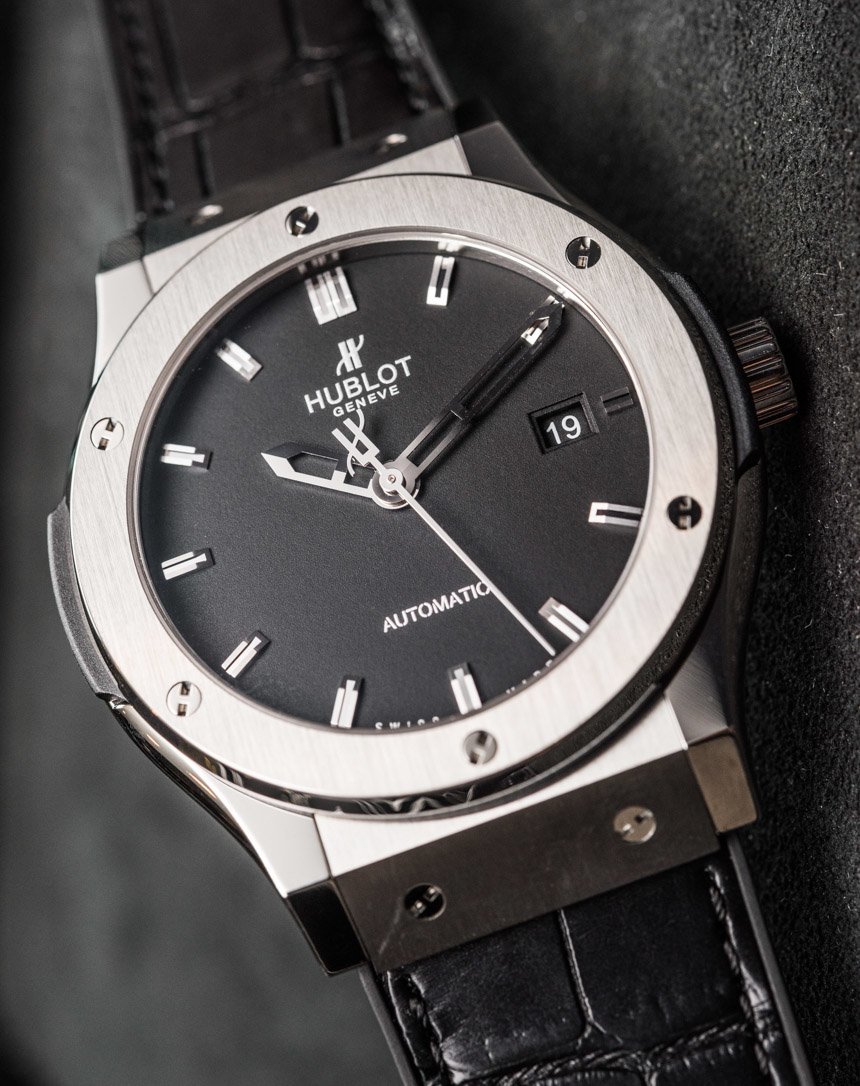
What sometimes gets lost or overlooked is the fact that Hublot was, indeed, a brand before JCB and they produced watches (and continue to do so) that are not the Big Bang or an offshoot of it. Drawing inspiration from the early Hublot watches from the 1980s, the Hublot Classic Fusion takes a step back from the busy, bold, and brash Big Bang and offers something (dare we say?) discreet. At 45mm wide with a simple date window, it’s unfussy, easy to read, and pretty good-looking, in my opinion.
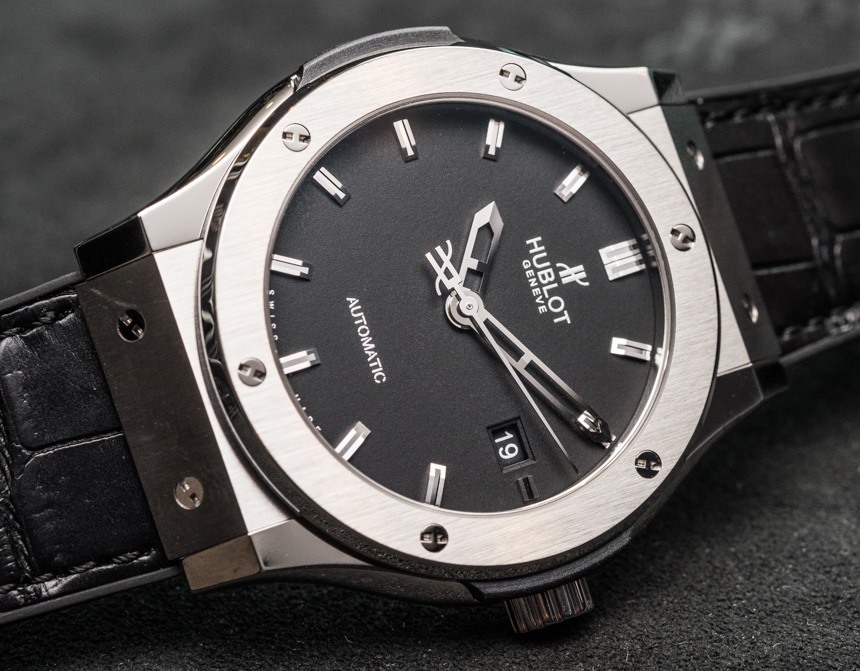
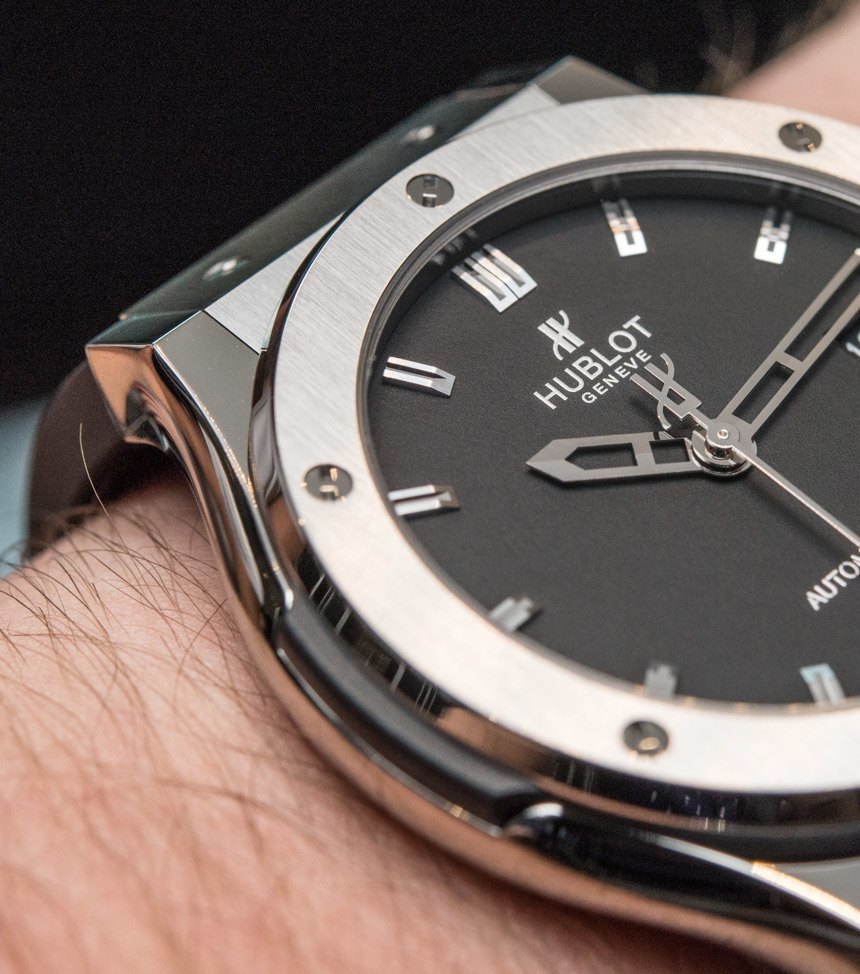
The debut of the Hublot Classic Fusion Titanium watch came in 2010. It’s interesting to note that it came out five years after the Big Bang – a sign that Hublot knew that there is a market out there for people who love the classic “porthole” look, but want something a little slimmer and less busy. Do you get the full “Hublot” experience with the Classic Fusion? Perhaps you would expect that to be a more difficult-to-answer question but… I would say yes! Yes, because you can see and feel that this watch’s DNA is pure Hublot. Plus, I quite appreciate the fact that it isn’t like every other Hublot out there, as it actually kind of stands out among the numerous iterations and takes on the Big Bang.
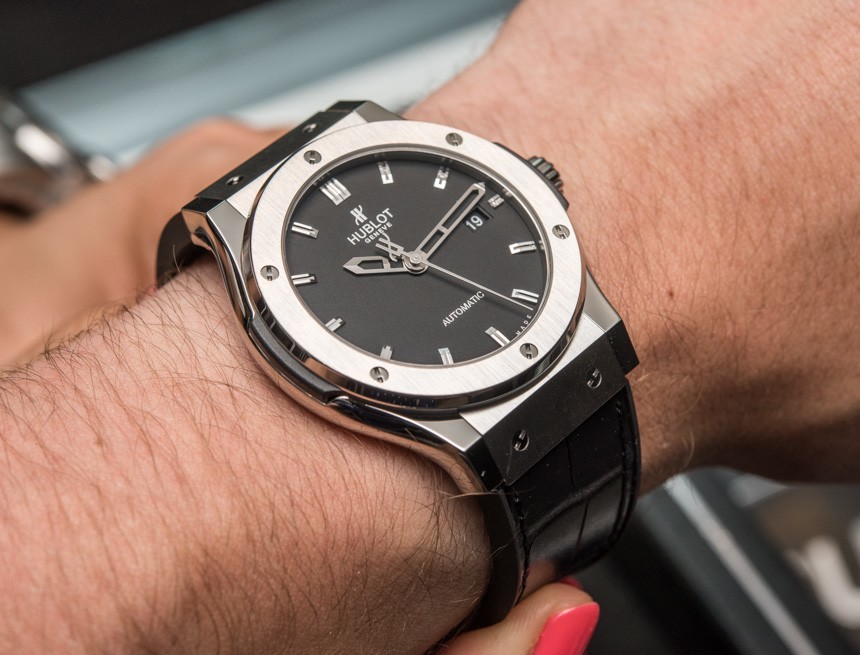
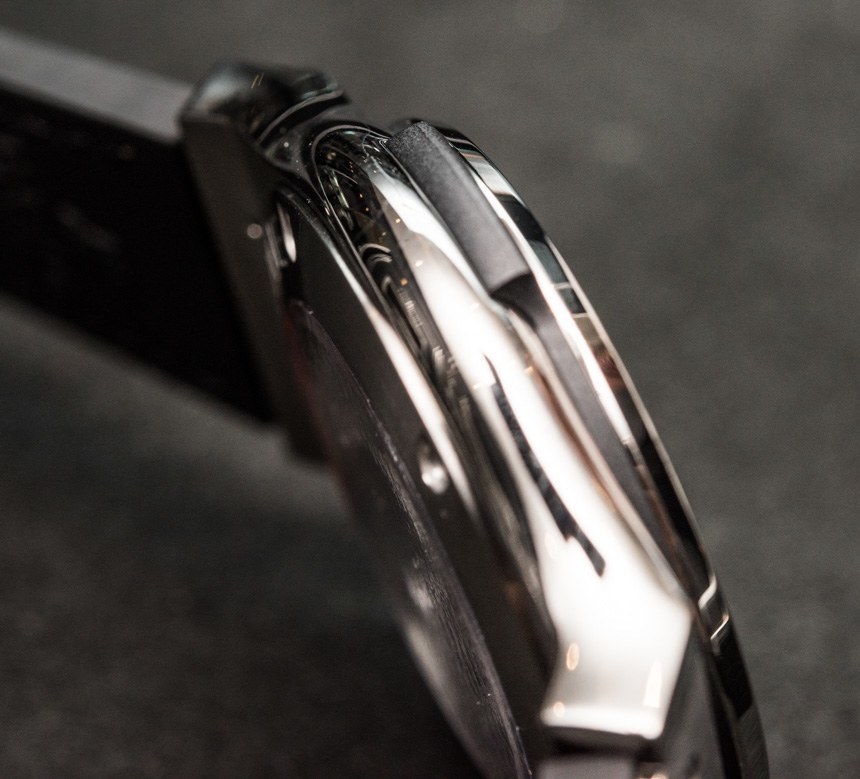
The question that comes to mind when further thinking about the full Hublot experience is, can you get the “real” feel on a non-sports watch? The rubber strap, the chronograph, and thick case are hallmarks of the Hublot Classic Fusion Titanium’s bigger sibling. Here, we have a 45mm case with a simple crown and muted matte black dial, a date window, Rhodium-plated hands and appliqués, along with two logos (the seconds hand also has the Hublot logo). Furthermore, it’s on an alligator strap, though you could swap that aspect of it and go for the rubber. It’s probably also the best watch the brand offers for wearing with a suit, as it’s slim enough to sit under a sleeve – something you can’t really say about the Big Bang.
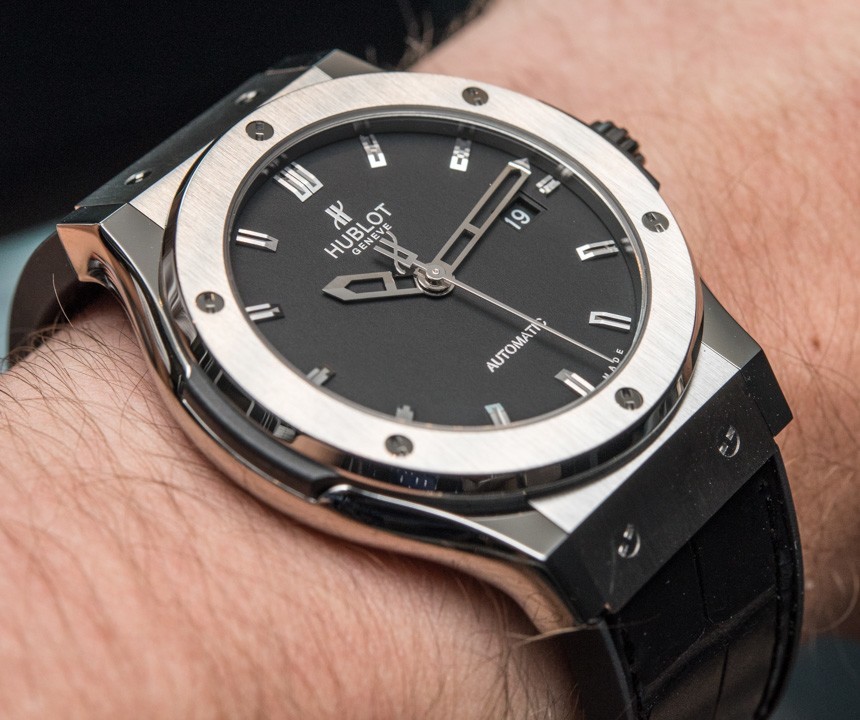
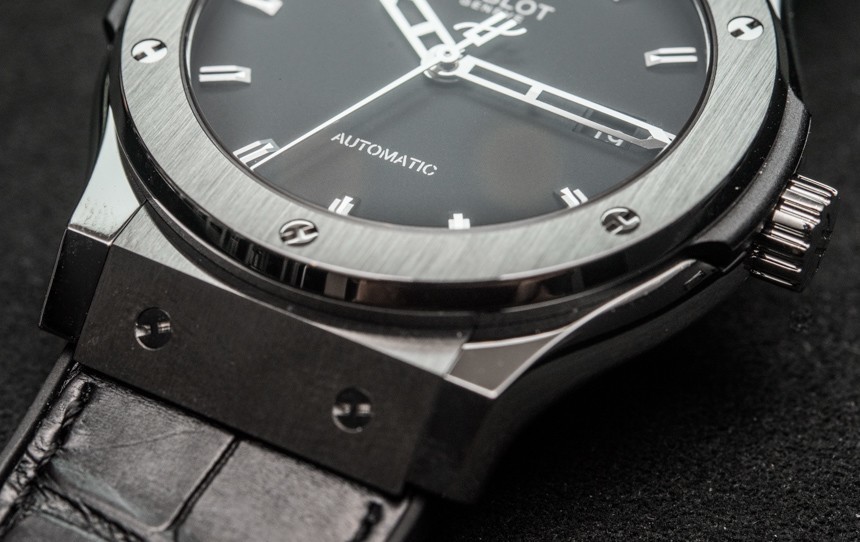
Don’t get us wrong though: plenty of the key Hublot DNA design elements are shared between the Hublot Big Bang and the Classic Fusion. The faceted lugs and all the more importantly that porthole look with the bezel design featuring six “H” screws helps the “brand look” fall right into place. The latter is a trait that I personally don’t dislike but I can see bothering others is the fact that the screws do not line up perfectly and can point any which way. To me, it adds a level of personality and wabi-sabi (finding beauty in “imperfections”). It’s not the flashiest out there, but the Hublot Classic Fusion Titanium sits comfortably with the brand.
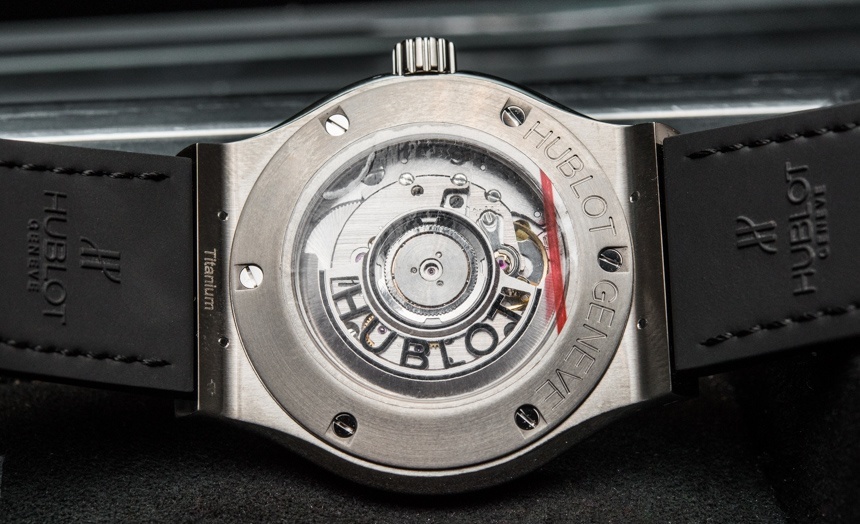
Moving on from looks and design, the Hublot Classic Fusion Titanium’s movement is the HUB1112, which is a modified Sellita SW300 that provides the date display and has 42 hours of power reserve. So, you’re not getting an in-house movement like you would with some of the pricier models, like the Big Bang UNICO (hands-on here). Nevertheless, the Sellita SW300 is a solid movement and, considering we are looking at an entry level model here, even the staunchest in-house movement snob would have to begrudgingly accept that fact.
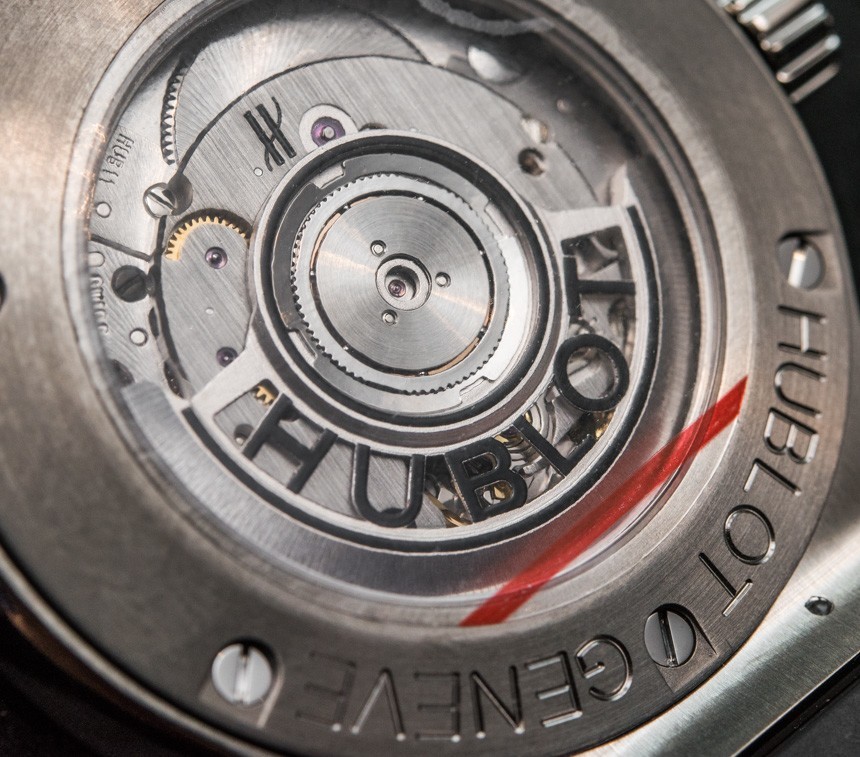
The clear case back is handsome, and there’s no risk of confusing this watch with another brand. The words “Hublot Geneve” are engraved in the titanium ring surrounding the sapphire crystal. Then, you’ve got the brand name skeletonized and in black in the winding rotor, and also the brand logo engraved onto a movement plate. For a look of complete solidness, you see the screws go from the front on the bezel through to the case back.
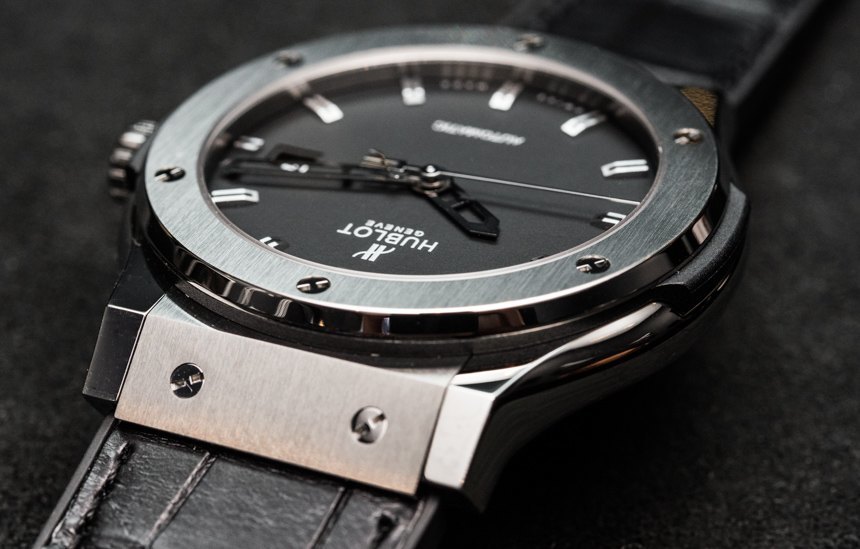
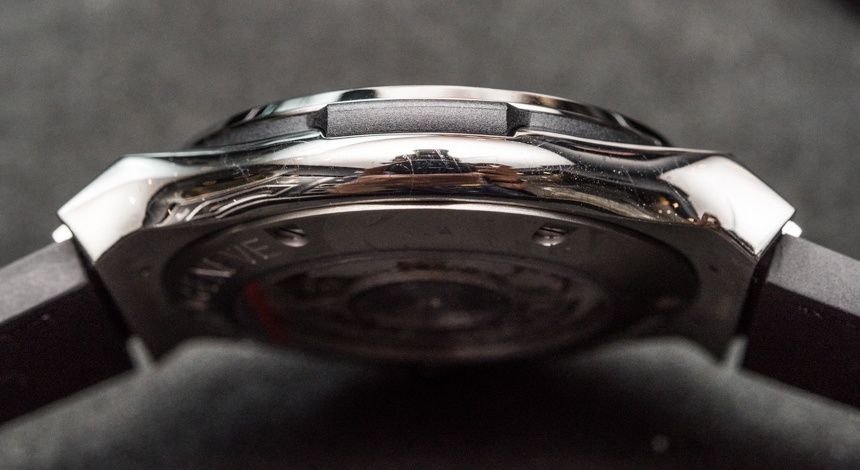
Getting to the name “Classic Fusion,” what exactly does “fusion” refer to? Victims of the 1990s fusion cuisine trend will always have a visceral reaction to the word, but Jean-Claude Biver was adamant that his watches must be a fusion of material and elements. Rubber, ceramic, titanium, gold, etc… What we’re looking at with the Hublot Classic Fusion Titanium is less of a mix of highly unusual materials as was the case with, say, this Texalium piece (hands-on here), and more the result of a conservative watch dreamt up by a boisterous mind. The end result? It’s a watch that is bold, but refined; elegant, but still pretty tough. The more you think about it, the more the name “Classic Fusion” makes sense.
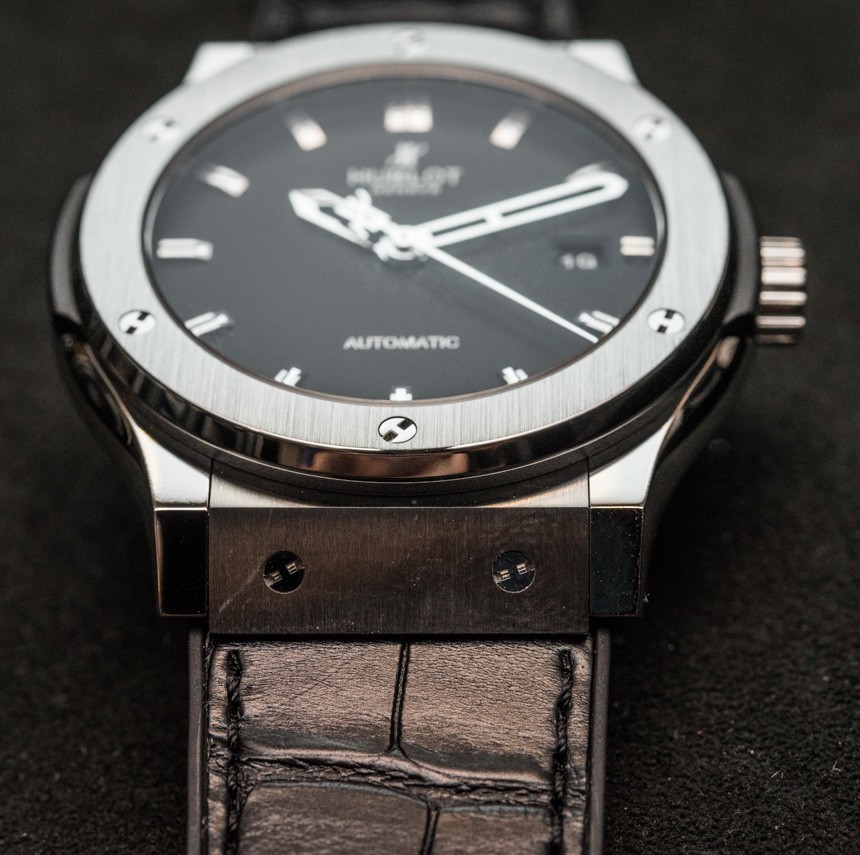
Since this is a cost-of-entry article, how much does it cost to join the club? Well, the Hublot Classic Fusion Titanium Ref.511.NX.1171.LR (the one you see in these photos), starts around $8,400. This is a very busy price point, with a lot of brands providing competition. It should be mentioned that this is for the 45mm version, as we felt that was the model most Hublot buyers would seriously be looking at. You can technically spend less and still get a Hublot, there’s the 33mm Classic Fusion Titanium that houses a quartz movement and retails for $4,200, the 38mm with automatic movement costs about $7,200, and the 42mm is $7,800. And, just to get it out of the way, if you want to get a Big Bang, you’re not even close, as those start at just over $20,000. Now, with all that in mind, let’s take a look at some specific pieces from the competition.

